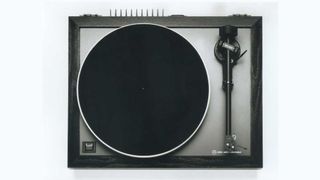Once upon a time there was a Glaswegian engineer called Ivor Tiefenbrun who was dissatisfied with his recently purchased hi-fi system. He realised his turntable was being detrimentally affected by his speakers’ sound pressure, so went about creating a deck that wouldn’t be. The result: the Linn Sondek LP12, now considered one of the best turntables of all time.
Those humble, well-told beginnings represent the genesis of one of today’s best-loved and acclaimed British hi-fi brands, Linn Products. Fittingly, its logo is a geometric illustration of the LP12’s 'single point' bearing.
Fast forward to today, the company's 50th anniversary year, and Linn's merits span not only several further editions of that same turntable but also music streamers, one-box streaming systems, power amplifiers, active speakers and accessories – all high-end affairs, all assembled in its Glasgow-based factory.
While the LP12's legendary status may not be surpassed by any of these later creations, the majority that has crossed the threshold of the What Hi-Fi? test room has left it armed with the full star set and a glowing recommendation. So you can imagine how difficult it's been to pick out just 13 Linn highlights from the past five decades. Still, we've had a good go...
Linn Isobarik speakers (1974)
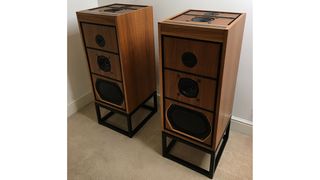
Linn’s roots may be turntable-shaped and grounded in a “source-first” philosophy, but it wasn’t long before the company spread its wings to make a pair of speakers. Just a year after the Sondek LP12 came the Isobarik speaker, priced at £1000 (around £12,000 in today’s money) and designed to deliver a cleaner, extended bass response from a smaller-than-was-then-typical speaker cabinet.
How? Through its patented isobaric loading principle, which was based on the renowned ‘50s design by RCA Laboratories’ Harry Olson. This saw two bass units in a cone-to-magnet (in-phase) arrangement driven in parallel in a sealed enclosure. As for the two midrange drivers and two tweeters above, one of each faced forward while the second of each was mounted on the top surface of the cabinet.
Perhaps most notable about the existence of the active version of the Isobariks, however, was that their design led to Linn’s active speaker systems (such as the Akubarik), which have been regular fixtures in the brand’s catalogue ever since. Inside each of them is an active crossover that splits the audio signal and matches it to each drive unit before being amplified by its own power amp.
Linn Kan speakers (1979)
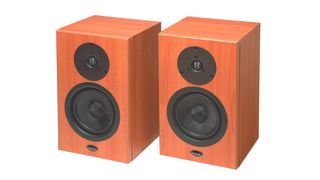
At the end of the '70s came a new entry-level speaker, Kan. The non-isobaric, two-way bookshelves used the same drivers as the previous speakers – a 19mm soft dome Scanspeak tweeter and a modified 110mm KEF B110 mid/bass unit, with a Linn-designed crossover – and adopted the then-popular LS3/5a cabinet design.
The Kan (which you can see in their full Mk1 glory here) were famously designed to work best near a wall. “Ideally the rear of the loudspeaker should be between 5-10cm from the wall and at least 45cm from any corner”, says the manual. And Linn also designed bespoke stands for them.
The second revisions, the suitably named Kan II, arrived in 1991 and were biwirable.
Linn Axis turntable (1985)
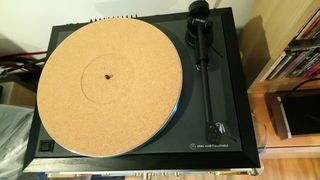
The rest of the ‘70s saw Linn sell its first moving-coil cartridge (Asak) and tonearm (Ittok LVII) for the LP12, and into the ‘80s Linn’s attentions spanned vinyl records (it cut its own acetate masters and started up its own independent record label, still going strong today), its first pre-amplifier (LK1) and power amp (LK2), and yet more upgrades to the LP12.
In amidst all of this, Linn also launched another turntable, the Axis – despite the prospect of CDs becoming the format of choice. (Ironically, of course, its decks far outlasted its own CD players, which ceased production in 2010).
You'd have felt for the Axis when it arrived, for it was always destined to sit in the shadow of the LP12. Still, the Axis had one up on its sibling: it was more affordable, at £313 (roughly £900 in today's money). It was also easy to use – other than fitting the cartridge, the Axis required little in the way of setting up – and, as we said in our original review, delivered a "clean and tidy performance without fuss or untidiness. It was detailed and articulate, with a dependable, solid sort of presentation. Some may think that the LP12 turntable is a tough act for LInn to follow. The new Linn Axis shows that it's not."
Troika MC cartridge (1986)
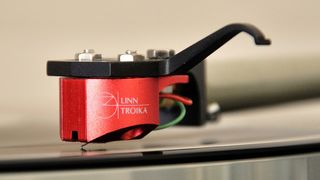
One of those aforementioned LP12 innovations of the '80s is the Troika MC cartridge, which replaced the Karma as the company's flagship moving-coil cartridge and was exclusively designed for its Ittok tonearms.
Linn modified its existing “direct coupled” Ittok tonearm to cater for this new metal-bodied cartridge and its triple-mounting system, which, due to its mechanical rigidity and strength, limited movement and vibration and thus reduced signal distortion.
The 7g cartridge had a lifespan of eight years – it was discontinued in 1994 – but it very much lives on today in the second-hand market... and not far off its original price either!
Linn Karik CD system (1992)
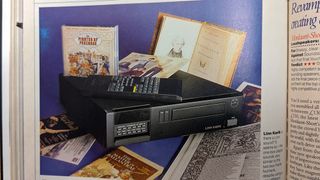
The Karik started life as Linn's debut standalone CD transport, but soon enough the company packaged it into a one-box affair to produce its first-ever full CD player – a decade after the compact disc format was born.
The Karik of old was designed to be used with the brand's Numerik multi-bit DAC, the two flying the flag for jitter reduction in the digital-to-analogue process. While the new manifestation integrated different DAC technology to that found in the Numerik, we noted the similarity of the two's sonic performance.
The single-box Karik was "highly detailed" and "highly polished". If you wanted to revel in precise detail, this was the box for you.
Linn Sondek CD12 MK1 player (1997)
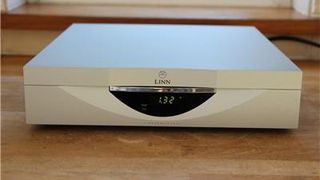
The creation of Linn’s flagship Klimax range of products can be traced back to the first Sondek CD12. This player featured the first loading mechanism that Linn had manufactured in-house, and the chrome-plated drawer was machined from solid aluminium in an effort to make it completely silent. It also had another unique feature: you could simply tap the front of it to control the player.
The cavity inside the CD12 that housed the circuitry was machined out of aluminium by Castle Precision Engineering (Tiefenbrun’s former venture) to provide a new level of isolation for the acoustic path. Linn felt that by doing this it had taken performance far enough to justify creating a flagship line of products – and thus Klimax was born.
Linn Classik all-in-one system (1998)
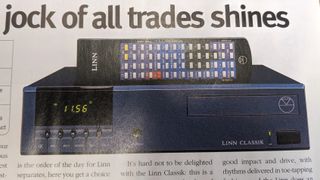
A then-£1020 CD player/tuner/pre and power amp combo, the Classik was the first all-in-one of its kind from Linn. It married a CD transport with a delta/sigma DAC, a 50-preset AM/FM tuner and 75 watts per channel of amplification. It even came boxed with a 2.5m pair of speaker cables!
We called it “cultured and fabulous to use” (words we doubt have been repeated in the pages of What Hi-Fi? since) and praised its performance capability: "It’s hard not to be delighted with the Linn Classik: this is a great combination of style and substance, with the performance expected of quality separates wrapped up in an undeniably cute package." You could use it alone with a pair of speakers, or up to five Classiks could be linked around the house to create a multiroom system.
It's little wonder the concept later evolved into the Classik Movie home cinema system for DVD and multi-channel surround playback.
Linn Klimax 500 Solo (1999)
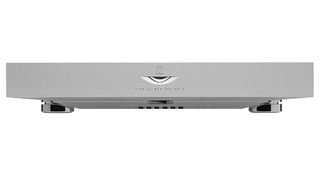
The Solo was one of the first Klimax models and really kicked off the reference range. A monster of a machine, the flagship mono power amplifier packed 500 watts of power into its compact, milled-from-aluminium, satin-anodised enclosure, which was marvelled at as much then as it is today. The Solo – a version of which is still available – used Linn's switch-mode power supply.
Linn has long recognised the importance of keeping electrical noise as low as possible, and here it used two circuit boards – one for the power supply, one for the audio circuitry – in order to keep the signal path short and simple.
Linn Klimax DS streamer (2007)
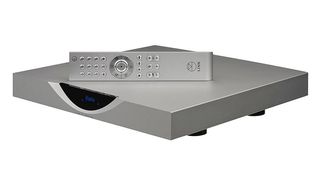
In the wake of the birth of Spotify, and arguably the music streaming world as we know it today, Linn entered the then-fledgling streamer market with a network player capable of playing a digital file over a home network rather than any physical format. And not just any stream but one up to 24-bit/192kHz – Linn’s own studio master recordings. It was the first Linn product with such native 'hi-res' support.
The Klimax DS was one of the earliest high-end streamers in the market, but Linn didn’t hang around, soon after rounding out the product offering with more affordable Akurate DS and Majik DS variants.
The streaming offering was complete with the introduction of Linn’s own control app (Kinksy) for browsing music and building playlists on Windows desktop. In 2011, DS players got HDMI inputs, as well as a Windows/Mac application called SongCast that allowed them to act as sound cards for computers. And these days the network player also boasts Linn’s Organik DAC architecture, Space Optimization room EQ and Exakt time-alignment technology.
In 2017, we said that the Klimax DS “was without doubt the most transparent and insightful music streamer we’ve had in our test rooms”.
Linn LP12 Klimax (2017)
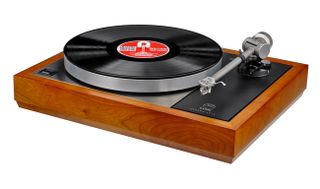
You aren’t surprised to see an LP12 featured in this list, are you? The original Sondek LP12 was designed in a modular, upgradeable way so that its principal design would stand the test of time even as its key elements were developed and improved in the future. While virtually every part has been upgraded since the original, the LP12 is still in production today – and true to Tiefenbrun’s vision, all the important improvements are retrofittable on older decks.
Six years ago we revisited the LP12 Klimax (the ‘best of the best’ version of the three available), which then was an £1860 package, including the Ekos SE tonearm, Kandid moving-coil cartridge, Urika phono stage, Radikal power supply and Keel sub-chassis. (It's since been updated again to include a new reference Ekstatik cartridge and Radikal motor design and power supply – the latest of over forty upgrades that have blessed the LP12 over its forty-eight-year lifespan.)
“There’s no denying that the range-topping LP12 is a mighty expensive thing… Yet, in most respects it’s startlingly better than what has gone before and is still right up there with the very best at this price,” we said in our 2017 review.
In 1994, Linn's LP12 took top honours at the What Hi-Fi? Awards (a notable year, as it was the last time that turntables would get their own dedicated category right up until it was reinstated in 2001) – and 23 years on, we concluded that “this old-timer’s still got it".
- Read the full Linn Klimax LP12 review
Linn Selekt DSM streaming system (2019)
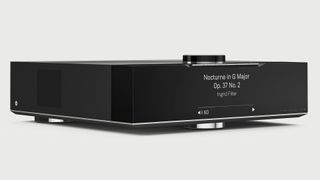
The arrival of the Selekt DSM in 2018 marked Linn’s first-ever just-add-speakers streaming system. But, as you’ll know if you’ve read further up this list, it was by no means its first one-box system; that was the popular CD-playing Classik system twenty-odd years ago.
While other brands such as Arcam and Naim saw Linn's success and began getting in on the all-in-one system act themselves, eventually moving to streaming systems such as the Arcam Music Solo and Naim Uniti Atom, Linn brought itself back up to speed with the Selekt DSM.
A modular and upgradeable, 100-watt-per-channel amplifier, integrated with Linn’s established streaming platform and sporting various inputs, it’s a wonderful-sounding, top-end box of electronics one should really consider if, a) they're looking for a do-it-all, space-saving solution, and b) they can afford the outlay.
The Selekt DSM, now renamed the Classic Hub, has since been joined by the Selekt DSM: Edition Hub, its main differentiator being a significantly more luxurious (and more stable and better-isolated) chassis, with beautifully machined thick aluminium panels that make the standard version feel a bit like a metal biscuit tin in comparison.
- Read our full Selekt DSM Classic Hub and Edition Hub reviews
Linn Series 3 wireless speaker (2019)

Linn expanded its product type offering not once but twice in 2019, what the second entrant being the company’s first wireless speaker. It was an ambitious one, too, with an asking price far beyond most of the premium single-box solutions. Thankfully, Linn’s ambition paid off.
The Series 3 remains one of the best-sounding one-box wireless speakers we’ve ever heard and has everything (bar perhaps an optical input and MQA support) you’d arguably desire from such a product: an exhaustive streaming platform, Bluetooth, AirPlay, HDMI connectivity, and a beautiful design that’s intuitive to use and control.
To reiterate our five-star review, “this is proper hi-fi”, no mistake. We wonder where Linn will go next?
- Read our full Linn Series 3 review
Linn Klimax DSM AV streaming preamplifier (2021)
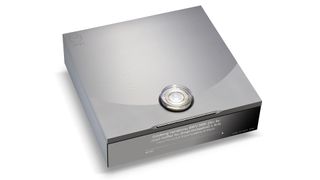
Fittingly, the newest and final product on this enviable list represents the pinnacle of one-box streaming systems so far – and not just in Linn's catalogue but the entire market. Indeed, we believe this well-equipped machine to be, to quote our review, "state of the art when it comes to streaming sound quality".
As the product name suggests, Linn's reference streamer (or, more accurately, streaming preamp) has an AV variant that builds on the 'standard' music-only one with four HDMI 2.0 sockets and a single e-ARC-equipped output, with the option for owners to pay a premium for a surround sound module too.
"It’s pretty obvious that it’s an exceptional product that sets new standards for the streamer category as a whole," we said in our review. And that feels like a pretty fitting way to conclude a best-of round-up that has more A-listers in it than a Marvel movie.
MORE:
Read our full Linn Klimax DSM AV review
And see all our Linn reviews
